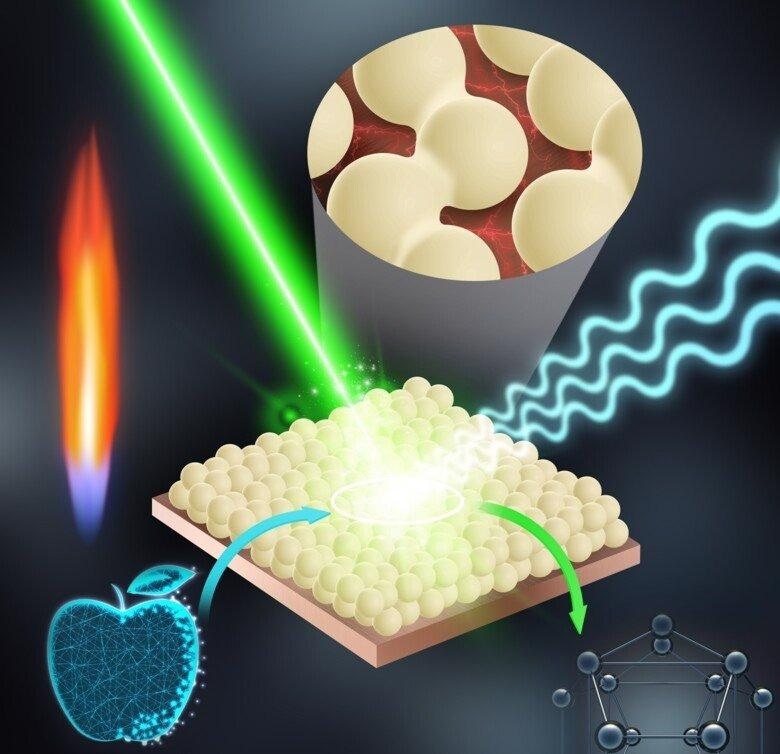
Flame nanoparticle deposition was used to produce robust nano-sensors that can detect pesticide residues on apple surfaces within minutes. Image Credit: Haipeng Li and Georgios A Sotiriou
Surface-enhanced Raman scattering, or SERS, a strong sensing technology that can boost the diagnostic indications of biomolecules on metal surfaces by over 1 million times, is used in the new nano-sensors.
Reports show that up to half of all fruits sold in the EU contain pesticide residues that in larger quantities have been linked to human health problems.
Georgios Sotiriou, Study Corresponding Author and Principal Researcher, Microbiology, Tumor and Cell Biology, Karolinska Institutet
Chemical and environmental studies, as well as the detection of biomarkers for different diseases, have all benefited from the method. High production costs and restricted batch-to-batch consistency have limited their use in food safety examinations so far.
Flame Spray Technology
The scientists used flame spray to deposit small droplets of silver nanoparticles onto a glass surface to build a SERS nano-sensor in this investigation. The flame spray is a well-established and cost-effective approach for installing metallic coatings.
The flame spray can be used to quickly produce uniform SERS films across large areas, removing one of the key barriers to scalability.
Haipeng Li, Study First Author and Postdoctoral Researcher, Sotiriou’s Lab, Karolinska Institutet
To improve the sensitivity of the unique silver nanoparticles, the scientists fine-tuned the space between them. They employed a spectrometer to expose their molecular fingerprints after applying a tiny layer of tracer dye on top of the sensors to test their substance-detecting capability.
According to the scientists, the sensors accurately and evenly identified chemical signals, and their efficiency remained unchanged when tested again after two and five months, demonstrating their shelf life potential and viability for large-scale production.
Detected Pesticides on Apples
The scientists configured the sensors to detect low quantities of parathion-ethyl, a hazardous agricultural insecticide that is prohibited or banned in most countries, to evaluate their practical application. On a portion of an apple, a small quantity of parathion-ethyl was applied. Eventually, the residues were gathered using a cotton swab soaked in a solution to break down the pesticide molecules. The pesticides were detected when the solution was sprayed on the sensor.
Our sensors can detect pesticide residues on apple surfaces in a short time of five minutes without destroying the fruit. While they need to be validated in larger studies, we offer a proof-of-concept practical application for food safety testing at scale before consumption.
Haipeng Li, Study First Author and Postdoctoral Researcher, Sotiriou’s Lab, Karolinska Institutet
The scientists now want to see if the nano-sensors can be used in other areas, like finding biomarkers for specific diseases at the point of service in resource-constrained environments.
The European Research Council (ERC), Karolinska Institutet, the Swedish Foundation for Strategic Research (SSF), and the Swedish Research Council all contributed to the study.
Journal Reference:
Li, H., et al. (2022) SERS Hotspot Engineering by Aerosol Self-Assembly of Plasmonic Ag Nanoaggregates with Tunable Interparticle Distance. Advanced Science. doi.org/10.1002/advs.202201133